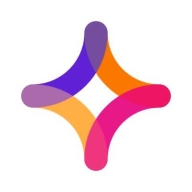

Jitterbit Harmony and JAMS are products in the integration and automation category. Jitterbit Harmony has the upper hand in ease of use and comprehensive features, while JAMS excels with scheduling capabilities and customization.
Features: Jitterbit Harmony offers advanced integration with an intuitive drag-and-drop design, suitable for seamless data synchronization. It also provides pre-configured connectors to systems like SAP and Salesforce for straightforward integration and a user-friendly cloud console for data monitoring. JAMS is known for robust scheduling using natural language selection, powerful customization with code-driven automation, and in-depth exception handling, appealing to complex automation needs.
Room for Improvement: Jitterbit Harmony could enhance its scheduling precision, expand on-premise deployment options, and refine customer support for more specific needs. JAMS might benefit from simplifying deployment, streamlining its integration capabilities, and improving its user interface to cater to less technical users.
Ease of Deployment and Customer Service: Jitterbit Harmony offers a cloud-based deployment model, simplifying setup and scaling with efficient online support resources. JAMS provides both on-premise and cloud deployment, allowing flexibility for various IT infrastructures but involves more complexity. Jitterbit's deployment is generally smoother, while JAMS offers adaptability and detailed support for diverse environments.
Pricing and ROI: Jitterbit Harmony's pricing reflects its extensive capabilities, offering value for businesses with diverse integration needs. Its cost can be justified by rapid ROI due to streamlined processes. JAMS may have a higher setup cost initially, but it provides significant returns through tailored automation solutions. Harmony shines in versatility, while JAMS shows ROI in precision automation.
They are very quick to respond depending on the issue's severity.
Their response is prompt, exemplifying how support should be.
We might be underutilizing it, but as more jobs require processing, additional servers would be necessary.
We experience periods of major incidents annually due to capacity constraints, which result in job failures.
Being on the new version, there's been zero downtime.
Another area for improvement would be the addition of source control for jobs internally, as this feature would solve several problems for me.
A major improvement would be the integration of AI to help us accomplish various tasks.
The price is fair considering the functionality and importance of the tool, although the increase did unsettle our management.
The most valuable feature of JAMS is its user-friendly interface, especially after upgrading from version six to seven.
This efficient feature has been invaluable, enabling us to streamline our workflow and enhance productivity.
| Product | Market Share (%) |
|---|---|
| JAMS | 2.1% |
| Jitterbit Harmony | 0.3% |
| Other | 97.6% |


| Company Size | Count |
|---|---|
| Small Business | 11 |
| Midsize Enterprise | 7 |
| Large Enterprise | 18 |
| Company Size | Count |
|---|---|
| Small Business | 8 |
| Midsize Enterprise | 3 |
| Large Enterprise | 1 |
JAMS offers efficient automation and scheduling with strong capabilities in planning, dependency management, and multi-platform support. Its intuitive interface and robust tools assist in managing complex workflows for enhanced resource allocation.
JAMS stands out for its blend of automation and scheduling capabilities, making it suitable for handling complex workflows across platforms. Its features such as batch scheduling, natural language scheduling, and interactive agents promote seamless integration with other tools like PowerShell. The focus on metrics and notifications ensures users are informed about operational efficiency enhancements. While JAMS is effective in many areas, users report a need for improved simulation for termination processes and a more intuitive client setup. They see potential in enhanced search functions, better exception handling, and greater transparency in custom execution. The current setup challenges like disappearing options and mobile accessibility can affect user satisfaction. Including a fully web-based client and improving documentation could add value.
What are JAMS' key features?
What benefits should users consider?
Organizations using JAMS for workflow and batch job automation leverage its capabilities for SSIS, SQL procedures, and Python scripts. JAMS supports file automation and managed file transfers across environments like AWS and Azure. Users employ JAMS for data management, reporting, and integration tasks, including handling holiday-aware scheduling for improved task coordination.
Jitterbit Harmony offers an advanced integration platform that simplifies data transformation, helps users quickly connect apps, and automates workflows, streamlining complex business processes efficiently.
Designed to meet the high demands of modern businesses, Jitterbit Harmony enables seamless integration across cloud and on-premise environments. By leveraging its powerful tools and user-friendly design, users can accelerate innovation, reduce operational costs, and enhance productivity. It bridges the gap between traditional and emerging technologies, ensuring organizations can adapt quickly to market changes and remain competitive.
What are the key features of Jitterbit Harmony?Jitterbit Harmony finds its application across numerous industries, from enhancing data integration in the healthcare sector to optimizing supply chain logistics in manufacturing. It supports financial institutions by improving transaction processing and facilitates real-time data connectivity in retail environments, making it a versatile choice for diverse industries looking to innovate rapidly.
We monitor all Workload Automation reviews to prevent fraudulent reviews and keep review quality high. We do not post reviews by company employees or direct competitors. We validate each review for authenticity via cross-reference with LinkedIn, and personal follow-up with the reviewer when necessary.